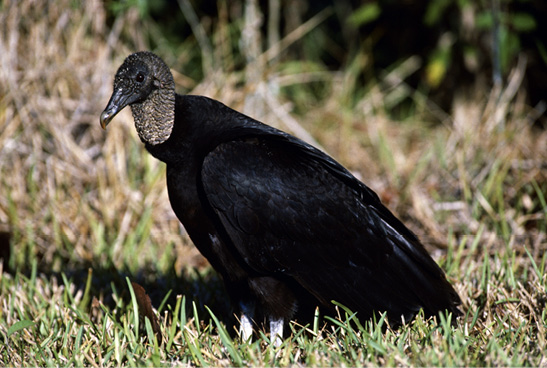Predator Control on Beef Cattle Operations
Incidence of Predator Problems
Carnivore predation of other species is a natural occurrence in Mississippi, but predation can be detrimental to livestock production. Relative to sheep and goat losses, cattle losses from predators are less common. However, Mississippi cattle operations still experience economically damaging losses from predators each year. The USDA National Agricultural Statistics Service (NASS) reported that in 2005, due to predation, Mississippi cattle operations suffered $1,037,000 in losses of cattle weighing more than 500 pounds and an additional $959,000 in losses of calves weighing less than 500 pounds.
Death loss statistics indicate that calves are more likely to be lost to predators than mature cattle. Of the 22,000 death losses in cattle weighing more than 500 pounds, 1,200 head were lost to predators. Of the 29,000 calf death losses where calves weighed less than 500 pounds, 2,600 head were lost to predators.
Additionally, the death loss data show that cattle and calf death losses due to predators represent a higher proportion of total cattle and calf death losses from all causes in Mississippi than in the United States as a whole. Predators were responsible for 5.5 percent of the total cattle (weighing more than 500 pounds) death losses from all causes in Mississippi as compared to 2 percent of the United States total. Similarly, losses from predators accounted for 9 percent of the total calf (weighing less than 500 pounds) death losses from all causes as compared to 6.7 percent of the United States total.
Common Predators of Cattle
NASS summarizes cattle loss data by several specific predator species including coyotes (Figure 1), dogs, mountain lions, bobcats, cougars, pumas, lynx, black vultures, wolves, and bears. Hawks, rattlesnakes, and even fire ants are other species that can cause damage to cattle. While only some of these species are found in Mississippi, the state has its share of species that prey on livestock.

For example, black vultures range throughout Mississippi year-round, often traveling in large flocks. Domestic dogs and coyotes are a common sight in Mississippi, as well. True feral dogs and coydogs (coyote-dog hybrids), though less common, may also be found in the state. There have even been isolated sightings of black bears on livestock operations in the state.
Mississippi calf death losses from predation in 2005 break down as follows: 26.9 percent from dogs, 23.1 percent from coyotes, 7.7 percent from other predators, and 42.3 percent from unknown predators. The large percentage of predator losses that were reported as unknown predators reveals difficulty in pinpointing specific predator problems. This makes dealing with predator problems on beef cattle operations challenging.
Both domestic and feral dogs can cause extensive damage once they start to attack livestock. They often range in packs, and these dog packs can harass and chase livestock for several hours at a time. Injured animals may be chased persistently. Losses from dogs running and attacking cattle can include damaged fences as a result of livestock attempting to escape, cattle injuries, exhaustion, weight loss, calf loss, and abortion.
The majority of coyote activity and livestock damage from coyotes occurs during the winter and spring months, coinciding with calving and the presence of nursing calves. Coyotes are opportunistic predators. Therefore, young calves may present a tempting target. Most producers report seeing two to four coyotes traveling together and occasionally more than four coyotes together in the same area, possibly family groups of coyotes.
Predators are more likely to be a problem for cattle producers when food supplies are scarce and competition is high. Predators on the ground will also compete with airborne predators. Black vultures, ravens, and crows commonly scavenge carcasses. In some instances, these birds of prey may attack live animals. Cattle that are unable to escape or defend themselves may be killed.
Predatory birds frequently attack first at the eyes, nose, navel, and anal area. They often blind the victim cattle by pecking out the eyes even if they do not kill them. Placenta and fresh feces containing colostrum or milk on the calving grounds may attract scavengers, including vultures. Black vultures may target weak, newborn calves and cattle that experience calving difficulty (Figure 2).

Predation versus Scavenging
It is important to be able to determine whether a situation is predation or scavenging. This will allow you to monitor and ultimately control predator problems on beef cattle operations. The presence of predators does not necessarily mean that predation is taking place. Cattle that die of causes other than predation may be scavenged, providing meals for predator species for up to several days at a time. Tracks, feces, feathers, or hair found at the site may provide evidence of animal presence at the scene, yet not of predation.
The more time that passes after a predator attack, the more difficult it becomes to determine the cause of the resulting cattle injuries or deaths. Carcass decomposition can be rapid in warm weather, destroying predation evidence. In only a few hours, scavenging birds and mammals can eliminate evidence of a predator attack.
When the cause of livestock loss cannot be readily determined, assistance may be necessary. Necropsy of a livestock carcass is a useful tool that can help determine if predators contributed to the loss. Observation of changes in cattle behavior can also help. Cattle may be more alert and defensive than usual if they are being harassed by predators. This abnormal behavior should be readily apparent to the skilled and observant herdsperson.
To identify predation as a cause of livestock loss, the following information is needed:
- predator species present in the area,
- habits and signs of each predator species,
- history of depredation problems in the area,
- normal and abnormal livestock appearance and behavior, and
- common causes of livestock losses other than predators.
Examine injured animals for the type and extent of wounds and feeding. If possible, determine whether wounds were made by mammals (canine teeth and/or claws), birds (talons and/or beaks), or something else. Most predators tend to attack the head and neck. This is particularly true of dogs. When prey is small relative to the predator, a single bite is often adequate to kill. Predators smaller than their prey are the most likely cause of death when many bite punctures accompanied by hemorrhage are detected. Likewise, young, inexperienced predators are likely to inflict multiple injuries by random attacks without killing their prey.
A scavenging animal may not be a “calf-killer,” but as the predator matures, it may be more prone to cause problems for the cattle producer. Coyotes are an example of a predator species that hones its predatory behavior over time. Typically, 3-year-old and older coyotes are responsible for effective cattle attacks. Inexperienced, younger coyotes and free-ranging dogs instead leave behind bobbed tails and mutilated calves with their inept, rear-end attacks.
Dogs, on the other hand, often cause extensive injuries to young and small livestock without killing them, but they do not typically feed on the livestock. Bobbed ears and tails are telltale signs of dog attacks. However, some dogs learn to kill efficiently and feed. In these cases, dogs, like coyotes, tend to leave torn, ragged tissue and splintered bones.
Where predation is suspected or confirmed, locate the attack, kill, and feeding sites if possible. Detailed photographs of these sites may be very valuable in investigating the incident. Animals that are killed are rarely found lying in a natural position. When searching for the attack, kill, and feeding sites, consider that many predators move their kills. Additionally, scavengers may disrupt the position of a carcass.
Humans are susceptible to many diseases carried by animals, so always take proper precautions to prevent exposure during examination of animal carcasses. Examine carcasses for wounds, bruises, hemorrhage, broken bones, and feeding. Consider necropsy as an option to gather more information on the cause of death and to help rule out different mortality factors.
Predator Control
Non-lethal methods of predator control on cattle operations used in Mississippi in 2005 included the following:
- guard animals such as donkeys (30 percent)
- culling (25.6 percent)
- exclusion fencing (25 percent)
- livestock carcass removal (13.1 percent)
- fright tactics (3.1 percent)
- frequent checks (3.1 percent)
- night penning (0.5 percent)
- other non-lethal methods (4.3 percent)
Interestingly, Mississippi reported the lowest use of frequent checks of cattle as a predator control method of all states with data reported (3.1 percent in Mississippi compared with 21.8 percent nationally). Mississippi’s lower use of this method likely is a result of the significant proportion of Mississippi cattle operators with off-farm employment. Nevertheless, close cattle observation is essential.
Predator control options vary by predator species. Some predator species may be protected by federal law, so it is important to stay informed of current laws when considering various predator control methods. Mississippi instituted legislation in July 1983 that addresses the issue of livestock owner rights and dog owner liability in cases when dogs threaten livestock.
The 1983 Dog Law essentially made it legal for cattle producers to put down dogs that kill livestock and to hold the dog owners responsible for the damage. It reads as follows in the amended Mississippi Code of 1972:
SEC. 95-5-19. Poultry or livestock-killing dog; how dealt with.
The owner, or the immediate family, employee or agent of the owner, of any poultry or livestock, including cattle, horses, mules, jacks, jennets, sheep, goats and hogs, may kill any dog in the act of chasing or killing any such poultry or livestock, and any such person shall not be liable therefore to the owner of the dog.
SEC. 95-5-21. Poultry and livestock killed by dog; owner liable.
If any dog shall kill or injure any poultry or any livestock, including cattle, horses, mules, jacks, jennets, sheep, goats and hogs, the owner of the dog shall pay to the owner of such poultry or livestock any loss suffered as a result of such injury and the value of the poultry or livestock killed and all costs of collection, including court costs and reasonable attorney’s fees.
Be prepared, be vigilant, and be legal when dealing with predators of cattle. It may take some investigation, planning, and effort on the part of individual cattle operations, but cattle losses due to predators can be reduced in Mississippi. For more information on predator control on cattle operations or related topics, contact your local MSU Extension office.
References
Main, M. B., M. D. Fanning, J. J. Mullahey, D. H. Thornton, & S. Coates. 2008. Rancher Perceptions of the Coyote in Florida. WEC 146. The Institute of Food and Agricultural Sciences. The University of Florida. Gainesville, FL.
Michie’s Legal Resources. 2011. Mississippi Code of 1972.
National Agricultural Statistics Service. August 23, 2006. Cattle Death Loss, by Cause. Mississippi Ag Report. Volume 06-17. Washington, D. C.
Wade, D. A. & J. E. Bowns. 1982. Procedures for Evaluating Predation on Livestock and Wildlife. Texas AgriLife Extension. B-1429. College Station, TX.
The information given here is for educational purposes only. References to commercial products, trade names, or suppliers are made with the understanding that no endorsement is implied and that no discrimination against other products or suppliers is intended.
Publication 2661 (POD-03-23)
Reviewed by Brandi Karisch, PhD, Associate Extension/Research Professor, Animal and Dairy Sciences. Written by Jane A. Parish, PhD, Professor and Head, North Mississippi Research and Extension Center.
The Mississippi State University Extension Service is working to ensure all web content is accessible to all users. If you need assistance accessing any of our content, please email the webteam or call 662-325-2262.






